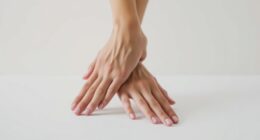Data-driven minimalism merges analytics with design to create user-centric experiences that boost engagement and satisfaction. By leveraging insights from tools like Google Analytics and Hotjar, you can spot user behavior trends and optimize design elements. Prioritizing essential features and effective negative space helps streamline navigation, reducing cognitive load. Personalization enhances user interaction, leading to higher retention rates. As you explore this topic further, you'll discover more strategies and current trends shaping the future of design.
Key Takeaways
- Data-driven design leverages user behavior analytics to refine minimalist approaches, enhancing clarity and user engagement.
- A/B testing in minimalist design reveals user preferences, leading to evidence-based adjustments for improved experiences.
- Effective use of negative space in minimalist layouts reduces cognitive load, making information processing more efficient for users.
- Analytics tools help identify key performance indicators, guiding minimalist design choices that increase user satisfaction and retention.
- Personalization driven by analytics fosters tailored experiences, significantly boosting user engagement in minimalist designs.
The Importance of Data-Driven Design

In a world where user preferences constantly evolve, understanding the importance of data-driven design is essential for creating effective experiences. By harnessing analytics tools like Google Analytics and Hotjar, you gain valuable insights into user behavior, allowing you to refine your UX design.
Utilizing both quantitative metrics—like conversion rates—and qualitative user feedback helps you make informed design choices that enhance user engagement. A/B testing enables you to compare variations and implement evidence-based adjustments, driving continuous improvement.
Furthermore, personalization increases user satisfaction, with 80% of consumers more likely to engage with brands that offer tailored experiences. Investing in data-driven design not only boosts user experience but also yields significant financial returns, making it a critical strategy in today's digital landscape. Additionally, understanding small mistakes in user interactions can lead to better design decisions and improved overall satisfaction.
Principles of Minimalism in Design

When you embrace minimalism in design, you focus on the essential elements that enhance clarity and understanding. Utilizing effective negative space guides your audience's attention and simplifies messaging. Additionally, reducing stress levels through organized environments can significantly enhance user experience and overall satisfaction in design.
Essential Elements Prioritized
Minimalist design revolves around prioritizing essential elements, which streamlines user experiences and enhances clarity. By focusing on what's vital, you can improve user satisfaction and retention.
Here are three key aspects to take into account:
- Visual Hierarchy: Organize content to highlight essential information, guiding users effortlessly through the design.
- Reduce Cognitive Load: Eliminate distractions, allowing users to focus on important data, leading to improved decision-making.
- Interactive Elements: Incorporate feedback mechanisms that engage users, fostering a sense of involvement.
Data-driven insights show that users prefer minimalist designs, resulting in a 60% increase in information retention. Additionally, user-friendly installation is a critical factor that contributes to the overall effectiveness of modern designs.
These principles not only enhance user experience but also meet the rising demand for clean, intuitive interfaces.
Effective Negative Space
Prioritizing core elements in design sets the stage for the effective use of negative space, which plays an essential role in enhancing clarity and visual appeal.
By leveraging data, you can create layouts that reduce cognitive load, allowing users to process information efficiently. Research shows that effective negative space can lead to a 60% increase in information retention and a 25% boost in user engagement.
Clean, minimalist designs resonate with users, as 76% prefer easy navigation. This strategic application of negative space facilitates intuitive interfaces, enhancing user experiences and satisfaction. Additionally, high vibrational energy in design can contribute to a more engaging and fulfilling user interaction.
Embracing these design trends not only minimizes visual clutter but also helps direct attention to significant elements, ultimately driving better retention rates and more meaningful interactions.
Clear Messaging Strategies
To effectively convey your message, embracing clear messaging strategies is essential in minimalist design. By focusing on clarity, you enhance user comprehension and boost audience retention.
Here are three key components to evaluate:
- Intuitive Layouts: Arrange design elements logically, guiding users seamlessly through your content.
- Strategic Whitespace: Use effective whitespace to avoid information overload, drawing attention to significant data points.
- Concise Language: Communicate ideas simply and directly, ensuring every word serves a purpose.
These principles not only improve decision-making but also emphasize the importance of straightforward communication, aligning with the rising demand for clean designs. Additionally, incorporating a functional layout can further streamline the user experience and enhance overall engagement.
Techniques for Effective Data Visualization

When it comes to effective data visualization, clean design principles are key to enhancing clarity and engagement.
You can also boost user interaction by incorporating dynamic tools that allow exploration of the data.
Additionally, diversifying investments can provide valuable insights into market trends that enhance your visual presentations.
Let's explore how these techniques can transform your visual presentations.
Clean Design Principles
Clean design principles play an essential role in effective data visualization, as they help you communicate information clearly and engagingly. By applying these principles, you can enhance user engagement and improve information retention.
Here are three key techniques:
- Use Whitespace: Employ whitespace to create balance and establish a clear visual hierarchy. This leads to better focus on essential data points.
- Strategic Omission: Remove unnecessary elements like excessive grid lines to avoid clutter, making your visuals more intuitive.
- Simplify Color Palettes: Opt for minimalistic designs with simple color schemes to emphasize key insights, enhancing user experience.
Incorporating these clean design principles will greatly improve your data visualization's effectiveness and interactivity, leading to clearer communication and better decision-making. Additionally, leveraging user feedback and expert reviews can further refine your visualizations to meet audience needs effectively.
Interactive Visualization Techniques
Interactive visualizations can greatly enhance your understanding of complex data by allowing you to engage directly with the information presented. By utilizing minimalist design principles, such as clean lines and simple color palettes, you can notably boost user understanding and retention. Tools like D3.js and Chart.js foster dynamic exploration, enhancing user engagement. Additionally, applying design thinking methodologies can further refine your approach to creating effective visualizations.
Here's a quick overview of effective techniques:
| Technique | Benefit |
|---|---|
| Visual Hierarchy | Guides attention to key insights |
| Clarity in Visualizations | Focuses on essential data points |
| Storytelling Techniques | Transforms data into engaging narratives |
| Analytics Integration | Informs data-driven design choices |
Current Trends in Data-Driven Minimalism

As the digital landscape evolves, the trend toward data-driven minimalism is gaining momentum, making designs simpler and more effective. Current trends highlight several key aspects:
- Clean Layouts: Research shows that users engage 25% more with designs that prioritize essential elements.
- User-Centric Approaches: The demand for minimalistic designs has surged by 45% among clients, reflecting a preference for clarity.
- Interactive Visualizations: Tools like D3.js and Chart.js enable engaging experiences without overwhelming users.
With mobile-first design principles, 70% of users prefer concise, visually appealing content.
Analytics reveal that simplified designs help users retain 60% more information, emphasizing the importance of minimalism in enhancing user engagement and aligning with modern design trends. Additionally, incorporating smart features in design can further enhance user experience by providing convenience and efficiency.
Enhancing User Engagement Through Design

While many designs aim for visual appeal, enhancing user engagement relies on a thoughtful approach to usability and clarity. By implementing user-centric design, you can increase engagement metrics considerably through intuitive navigation and streamlined interfaces.
Minimalist design principles, like effective use of whitespace, enhance user understanding and retention. Utilizing user analytics helps you create personalized user experiences, which can boost interaction rates and user loyalty.
Data-driven design decisions allow you to identify and address bottlenecks in user interactions, ultimately improving conversion rates. Additionally, adopting an iterative design process with A/B testing enables real-time adjustments, enhancing overall user satisfaction and engagement outcomes. Furthermore, color accuracy plays a vital role in ensuring that visual elements are perceived correctly, further engaging users.
Prioritizing these strategies will lead to a more engaging experience for your users.
Future Directions for Analytics in Design

The future of design analytics is becoming increasingly sophisticated, offering designers powerful tools to refine their approaches.
With the rise of data-driven strategies, you'll need to focus on:
- User Behavior Insights: Utilize advanced analytics like Google Analytics to understand how users interact with your designs.
- A/B Testing: Continuously compare different minimalist iterations to see what enhances user satisfaction and engagement.
- Key Performance Indicators (KPIs): Monitor metrics like conversion and bounce rates to optimize navigation and streamline experiences.
Frequently Asked Questions
What Tools Are Best for Analyzing User Interaction Data?
To analyze user interaction data effectively, you should consider tools like Google Analytics, Hotjar, and Mixpanel.
These platforms provide insights into user behavior, allowing you to track engagement metrics and identify trends. Google Analytics offers robust tracking capabilities, while Hotjar gives you heatmaps and session recordings to visualize interactions.
Mixpanel focuses on advanced analytics and cohort analysis. Choosing the right tool depends on your specific needs and the depth of data you want to explore.
How Do I Start Implementing Data-Driven Minimalism in My Designs?
To start implementing data-driven minimalism in your designs, begin by analyzing user interaction data to identify patterns and preferences.
Focus on simplifying your layouts by removing unnecessary elements that don't serve a purpose.
Prioritize essential features based on user feedback and analytics.
Test different designs with real users to see what resonates.
Finally, iterate continuously, adapting your approach as you gather more insights, ensuring your design remains user-centric and effective.
Can Data-Driven Minimalism Be Applied to Mobile App Design?
Absolutely, you can apply data-driven minimalism to mobile app design!
Start by analyzing user behavior and preferences through analytics. Identify the essential features that enhance user experience and eliminate any unnecessary clutter.
Focus on intuitive navigation and clean interfaces, making sure every element serves a purpose.
What Industries Benefit Most From Data-Driven Minimalism?
In a world overflowing with options, data-driven minimalism cuts through the clutter like a hot knife through butter.
Industries like tech, e-commerce, and healthcare really benefit from this approach. By simplifying user experiences based on analytics, you'll enhance engagement and satisfaction.
It allows you to focus on what truly matters, driving efficiency and effectiveness in your designs. Embracing this method can transform how your audience interacts with your products.
How Does Data-Driven Design Impact Brand Identity and Recognition?
Data-driven design markedly impacts your brand identity and recognition by ensuring that every element resonates with your target audience.
By analyzing user preferences and behaviors, you can create visuals and messaging that align with their expectations. This tailored approach not only enhances user experience but also strengthens brand loyalty.
When people consistently encounter designs that reflect their needs and tastes, your brand becomes more memorable and recognizable in a crowded marketplace.
Conclusion
In a world flooded with information, embracing data-driven minimalism isn't just a trend; it's a necessity. You might think less is more, but when analytics guide your design choices, you're not sacrificing depth for simplicity—you're enhancing clarity and engagement. As we move forward, consider the theory that effective design can actually boost decision-making. By harnessing data to streamline your visuals, you can create an experience that not only captivates but also empowers your audience to act.









